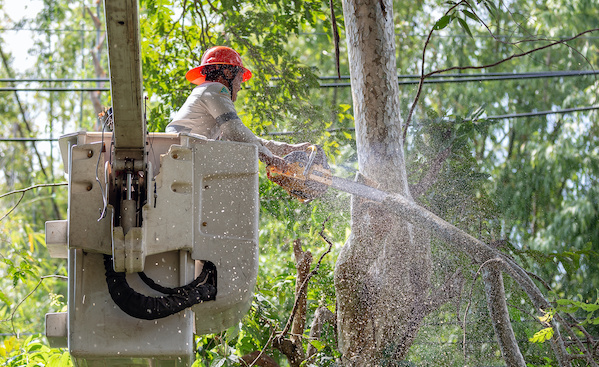Keeping trees away from power lines is important. A power outage may happen when tree limbs come in contact with power lines. Energized tree limbs are also a safety hazard to anyone who touches the tree.
Reasons that Utilities Prune Trees
SAFETY: To reduce the risk of electric shock and fire hazard by providing separation between wires and trees.
RELIABILITY: To reduce utility service interruptions. Trees that are too close to power lines can interfere with electric service, especially during harsh weather.
Pruning Professionals
Qualified utility line clearance professionals should work on a tree that has branches near power lines. Qualified utility line clearance professionals should trim trees near active power lines using pruning techniques that meet national safety and best practices standards.
Homeowners should not hire a private tree contractor to work on trees near power lines or attempt to do the work themselves. The utility should first be contacted before trees are worked on near power lines.
Planting Trees
When planting a new tree, consider the placement of the tree and what space the tree will need when it reaches its mature height and width.
Look up from the proposed planting site and ensure there are no overhead wires in the vicinity. If there are, consult your utility before planting.
Be aware of the location of any underground utilities. When projects involve digging, contact SC811 at (803) 939-1117 at least three working days in advance to request SC811 mark the location. State law requires notification before any excavation project.
When Trees are Pruned
The time between tree-trimming activities varies from utility to utility, and most utilities try to prune trees BEFORE they pose a risk to power lines.
Service interruptions may happen even if tree limbs do not come in contact with power lines. Utilities trim trees to prevent outages due to limbs swaying in the wind, sagging from the weight of ice/snow, or trees uprooting.
 Pruning Factors
Pruning Factors
The type of pruning performed by a utility depends on a number of factors:
- tree growth rate and structure
- wind direction and water sources
- tree species and health
- proximity of tree to wires and line configuration— higher voltage lines require greater clearance